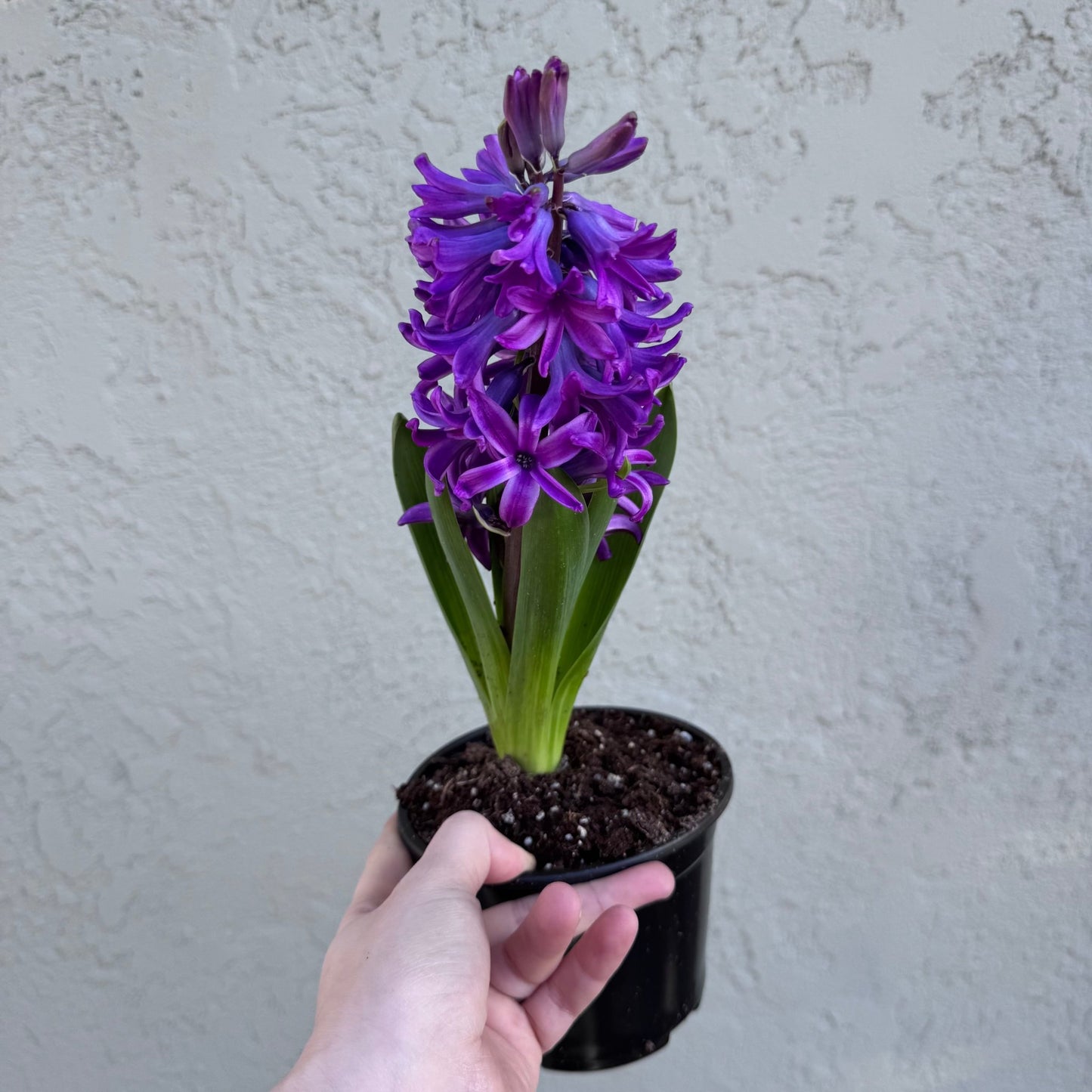Rocket Farms
Hyacinth
Hyacinth
Couldn't load pickup availability
Hyacinths are highly fragrant, bulbous plants that are treasured in gardens and homes for their dense, star-shaped blossoms arranged on spikes. Originating from the eastern Mediterranean and parts of Asia, these plants are a popular choice in spring gardens and for forced blooms indoors during the winter.
Appearance
Hyacinths come in a range of vibrant colors, including blue, red, purple, pink, white, and yellow. Each bulb typically produces a single dense, columnar spike of flowers, which can last up to two weeks.
Planting and Care
Here’s how to care for hyacinths, both outdoors and indoors:
Outdoor Planting
- Planting Time: Plant hyacinth bulbs in the fall before the ground freezes. In temperate climates, this is typically around September or October.
- Soil: Choose well-draining soil to avoid waterlogging the bulbs. Adding compost or bone meal can enrich poor soil and help with drainage.
- Sunlight: Hyacinths prefer full sun but can tolerate partial shade. The more sun they get, the better they will bloom.
- Planting Depth and Spacing: Plant the bulbs about 4 inches deep with the pointed end up and space them approximately 3 inches apart.
- Watering: Water your bulbs after planting and maintain moderate moisture during the growing season. Avoid overwatering as this can lead to bulb rot.
Indoor Planting (Forcing)
- Potting and Chilling: To force hyacinths indoors, plant the bulbs in pots with well-draining soil in the fall. They require a chilling period of 10-13 weeks in a dark, cool environment (such as a refrigerator) to simulate winter.
- After Chilling: Once chilled, move the pots to a warmer, light-filled area to encourage growth. This typically involves initially placing them in indirect light and cooler temperatures, gradually moving them into brighter light as the stems grow.
- Blooming: Forced hyacinths usually bloom a few weeks after being brought out of chilling.
Maintenance
- Fertilization: Apply a balanced fertilizer when the leaves emerge and again after flowering to support bulb growth for the next season.
- Aftercare: Once the flowers fade, cut back the flower spikes to prevent seed formation. Allow the leaves to continue growing until they die back naturally, as they are feeding the bulb for the next year’s growth.
- Division: Hyacinth bulbs can be left in the ground to naturalize, but you may need to dig and divide them every few years if they become overcrowded.
Hyacinths are not only beautiful and aromatic but also relatively easy to grow, making them a favorite among gardeners looking to add a splash of color and fragrance to their spring landscape or indoor setting.
Also, not for nothing, every time I see hyacinths I think of this line from The Wasteland by T.S. Eliot:‘You gave me hyacinths first a year ago;
Uplifting, right?? :-D
Share


